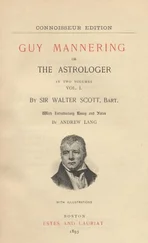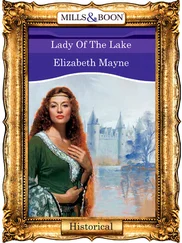Walter Scott - Scott's Lady of the Lake
Здесь есть возможность читать онлайн «Walter Scott - Scott's Lady of the Lake» — ознакомительный отрывок электронной книги совершенно бесплатно, а после прочтения отрывка купить полную версию. В некоторых случаях можно слушать аудио, скачать через торрент в формате fb2 и присутствует краткое содержание. Издательство: Иностранный паблик, Жанр: foreign_prose, на английском языке. Описание произведения, (предисловие) а так же отзывы посетителей доступны на портале библиотеки ЛибКат.
- Название:Scott's Lady of the Lake
- Автор:
- Издательство:Иностранный паблик
- Жанр:
- Год:неизвестен
- ISBN:нет данных
- Рейтинг книги:4 / 5. Голосов: 1
-
Избранное:Добавить в избранное
- Отзывы:
-
Ваша оценка:
- 80
- 1
- 2
- 3
- 4
- 5
Scott's Lady of the Lake: краткое содержание, описание и аннотация
Предлагаем к чтению аннотацию, описание, краткое содержание или предисловие (зависит от того, что написал сам автор книги «Scott's Lady of the Lake»). Если вы не нашли необходимую информацию о книге — напишите в комментариях, мы постараемся отыскать её.
Scott's Lady of the Lake — читать онлайн ознакомительный отрывок
Ниже представлен текст книги, разбитый по страницам. Система сохранения места последней прочитанной страницы, позволяет с удобством читать онлайн бесплатно книгу «Scott's Lady of the Lake», без необходимости каждый раз заново искать на чём Вы остановились. Поставьте закладку, и сможете в любой момент перейти на страницу, на которой закончили чтение.
Интервал:
Закладка:
Walter Scott
Scott's Lady of the Lake
INTRODUCTION
Walter Scott, the ninth of a family of twelve children, was born at Edinburgh in August, 1771. His first consciousness of existence dated from the time when he was sent, a lame, delicate child, to Sandyknowe, the residence of his paternal grandfather. Here he “was often carried out and laid down beside the old shepherd among the crags or rocks round which he fed his sheep.” If Scott’s genius was late in flowering, who can say that the budding did not begin in that early, close companionship with the Highland country which he was to reproduce so vividly in his verse and fiction?
With strength increased by open-air life, although still slightly lame, we find him later a sturdy, active, not over-studious boy at school at Edinburgh and Kelso, and at fifteen beginning in his father’s office the legal studies which he continued at the university.
Referring to the time after leaving the high school, when he made the acquaintance of Tasso’s “Jerusalem Delivered,” Percy’s “Reliques,” and the best works of English fiction, Scott says, “To this period I can trace distinctly the awakening of that delightful feeling for the beauties of natural objects which has never deserted me. From this time the love of natural beauty, more especially when combined with ancient ruins or remains of our fathers’ piety or splendor, became within me an insatiable passion, which, if circumstances had permitted, I would willingly have gratified by traveling half over the globe.”
His gigantic memory had always appropriated most eagerly the heroic and romantic elements of verse, tale, and history, from the days when, a child, he read Pope’s translation of Homer aloud to his mother, to the time when he hunted ballads and chased traditions with the keen zest of a scholar and an antiquary.
The first notable outcome of these researches was his “Minstrelsy of the Scottish Border,” published in 1802. To this collection of ancient Border ballads, which he had spent years in collecting, were added some spirited new ones which he had deftly shaped to the old models. This form of poetic expression was especially suited to the genius of Scott, and the class of subjects to which it was usually adapted had long been the object of his enthusiastic study.
The amplification, then, of the ballad to the proportions of the more pretentious metrical romance came by a natural process of crystallization of the elements of a rare power, profound research, and inspiring themes.
The first of the more ambitious efforts of Scott was the “Lay of the Last Minstrel,” which was published in 1805. This became immediately and generally popular, and paved the way for the favorable reception of later productions. In 1808 “Marmion,” the greatest poetical work of Scott, appeared. This was so enthusiastically received, that a certain friend urged him to be satisfied with such unexampled success, and refrain from publishing anything more, lest he impair his prestige. To this he replied, “If I fail, it is a sign that I ought never to have succeeded, and I will write prose for life: you shall see no change in my temper, nor will I eat a single meal the worse. But if I succeed,
“‘Up with the bonnie blue bonnet,
The dirk, and the feather, and a’!’ ”
In this confident, buoyant spirit he made another venture, “The Lady of the Lake,” published in 1810; and its extraordinary success justified his expectations. How sincere and widespread was the enthusiastic appreciation of this poem may be judged from the following instance, mentioned in Lockhart’s “Life of Scott:” “In the course of the day, when ‘The Lady of the Lake’ first reached Sir Adam Fergusson, he was posted with his company on a point of ground exposed to the enemy’s artillery, somewhere, no doubt, on the lines of Torres Vedras. The men were ordered to lie prostrate on the ground. While they kept that attitude, the captain, kneeling at the head, read aloud the description of the battle in Canto VI., and the listening soldiers only interrupted him by a joyous huzza when the French shot struck the bank close above them.” We are not surprised at the soldierly tribute to the power of a poet “through whose head a regiment of horse had been exercising since he was five years old,” whose sympathies had always been in touch with heroic achievement and chivalrous enterprise, and whose poems rang “with the quick, metrical tramp of his own moss-troopers;” but this was only a fractional though precious part of the applause that greeted him. “The whole country rang with the praises of the poet; crowds set off to view the scenery of Loch Katrine, till then comparatively unknown; and, as the book came out just before the season for excursions, every house and inn in that neighborhood was crammed with a constant succession of visitors.”
Scott, in speaking of this poem, says, “The ancient manners, the habits and customs, of the aboriginal race by whom the Highlands of Scotland were inhabited, had always appeared to me peculiarly adapted to poetry. The change in their manners, too, had taken place almost within my own time, or at least I had learned many particulars concerning the ancient state of the Highlands from the old men of the last generation. I had also read a great deal, seen much, and heard more, of the romantic country where I was in the habit of spending every autumn; and the scenery of Loch Katrine was connected with the recollection of many a dear friend and merry expedition of former days. This poem, the action of which lay among scenes so beautiful, and so deeply imprinted upon my recollections, was a labor of love; and it was no less so to recall the manners and incidents introduced. The frequent custom of James IV., and particularly of James V., of walking through the kingdom in disguise, afforded me the hint of an incident which never fails to be interesting if managed with the slightest address or dexterity.”
The high-water mark of Scott’s popularity as a poet was reached with “The Lady of the Lake.” In 1813 he published “Rokeby,” and in 1814 “The Lord of the Isles.” In the latter year “Waverley” appeared anonymously; and with this prose romance began Scott’s career as a novelist, which extended through fourteen years. In this period of time he wrote twenty-three novels, besides some other works of minor importance.
“The land of the lakes and the mountains, and of the brave men,” as the old Scots called their country, included the two great divisions, the Highlands and the Borders, which were so much wilder and more barbarous than the others, that they might be said to be altogether without law. Although nominally subject to the King of Scotland, yet they were so untamable that the enforcement of justice was almost as difficult as the subjugation of a foreign people.
The Highlands, rocky and mountainous parts of the country, comprised a large share of the north of Scotland. It was into these pathless wilds that the Romans drove the ancient Britons, and it was from these retreats that the fugitives afterward sallied forth to harass their conquerors.
The language of the Highlands, the Gaelic, was totally different from that of the Lowlands, which resembled English. The dress of the mountaineers also differed from that of the Lowlanders. They wore a plaid or mantle of frieze, or of a striped stuff called tartan, one end of which, being wrapped around the waist, formed a short petticoat, which descended to the knee, while the rest they folded around them like a sort of cloak. Their feet were covered with buskins made of rawhide; and the usual head covering was a cap called a “bonnet.” They went always armed. Their weapons were bows and arrows, large swords, poleaxes, and daggers for close fight. For defense they had a round wooden shield, or target, stuck full of nails, and their great men had shirts of mail composed of links of iron. The common men sometimes wore a jacket of leather, having plates of metal stitched into it, but usually had no armor.
Читать дальшеИнтервал:
Закладка:
Похожие книги на «Scott's Lady of the Lake»
Представляем Вашему вниманию похожие книги на «Scott's Lady of the Lake» списком для выбора. Мы отобрали схожую по названию и смыслу литературу в надежде предоставить читателям больше вариантов отыскать новые, интересные, ещё непрочитанные произведения.
Обсуждение, отзывы о книге «Scott's Lady of the Lake» и просто собственные мнения читателей. Оставьте ваши комментарии, напишите, что Вы думаете о произведении, его смысле или главных героях. Укажите что конкретно понравилось, а что нет, и почему Вы так считаете.









